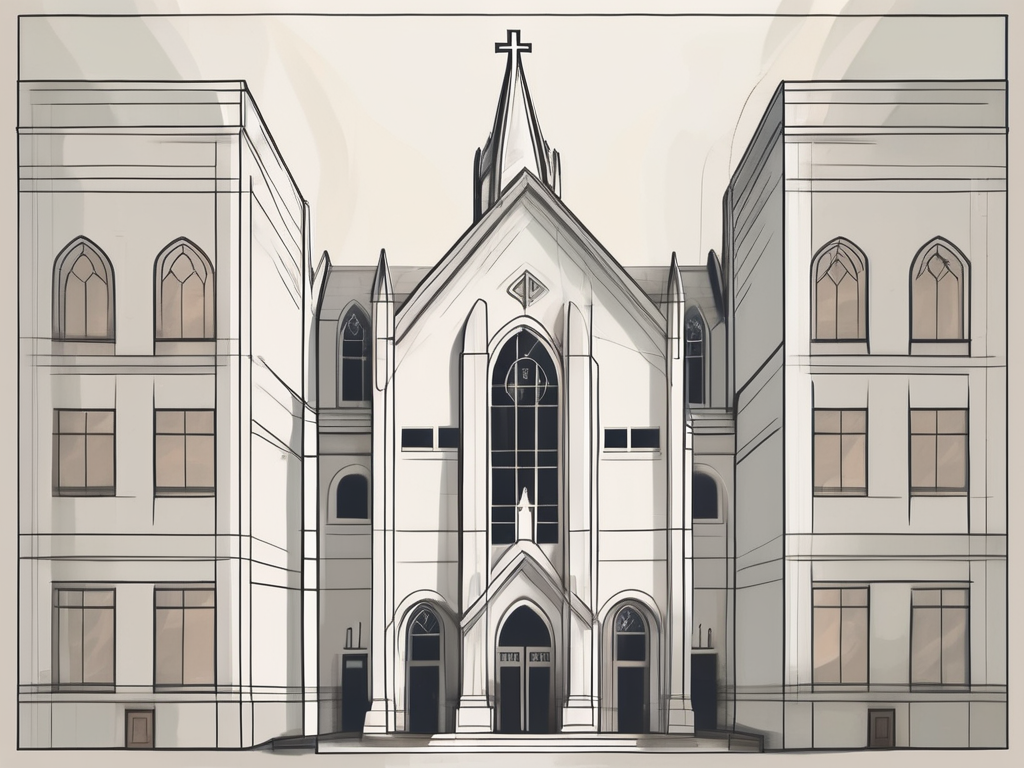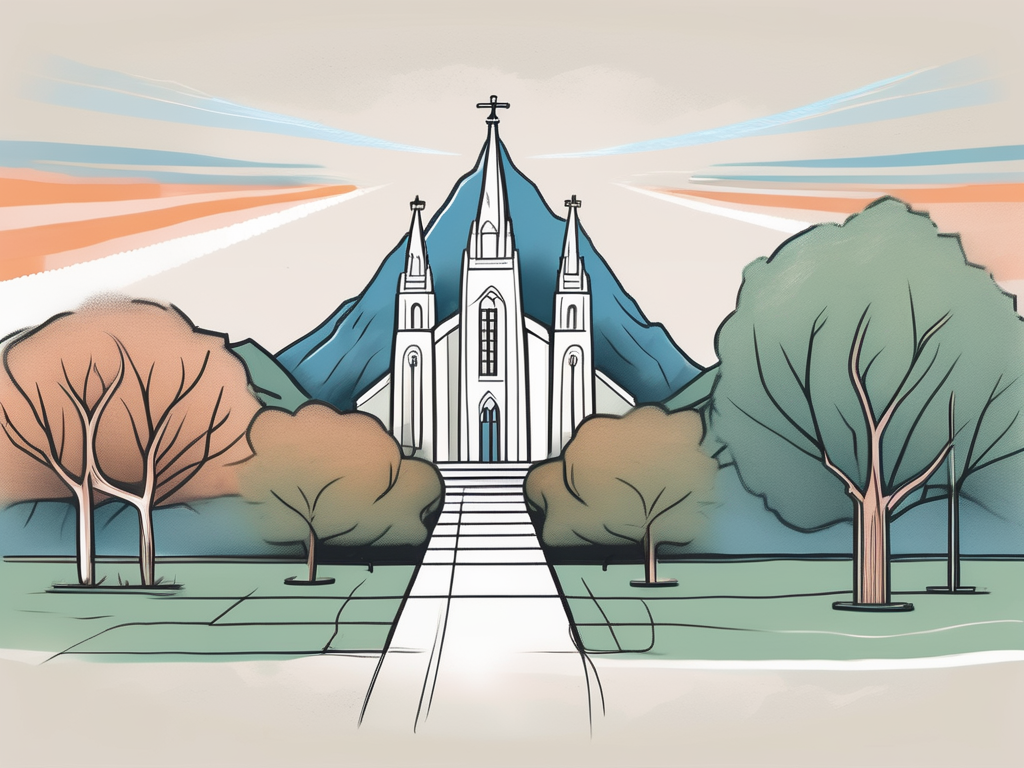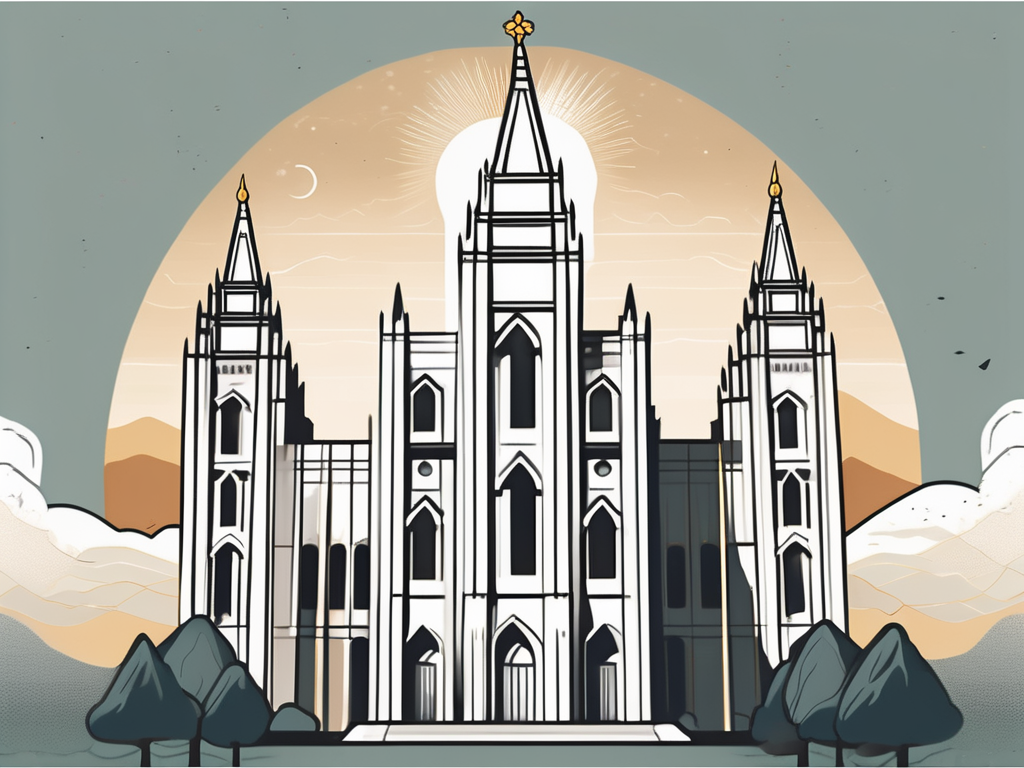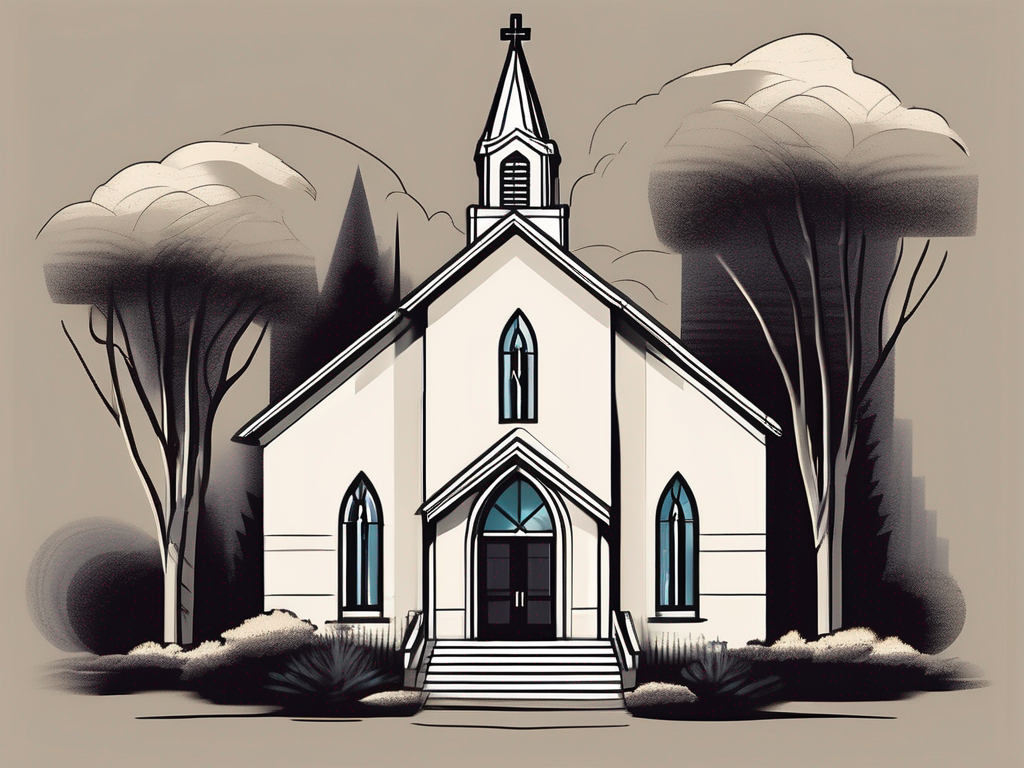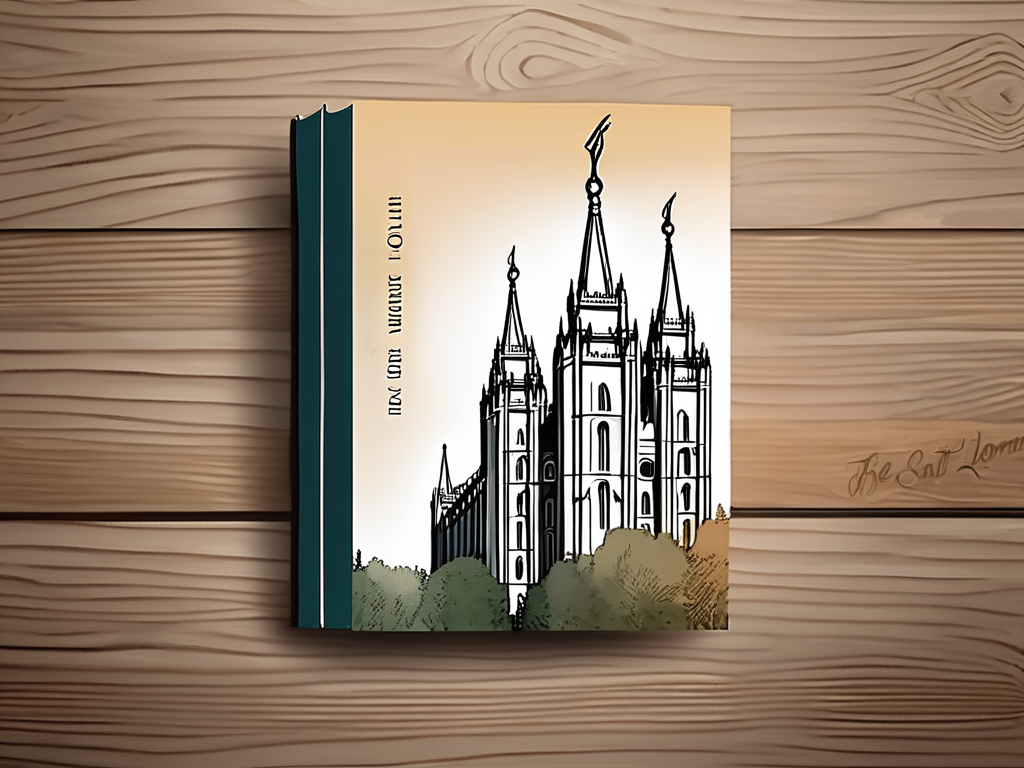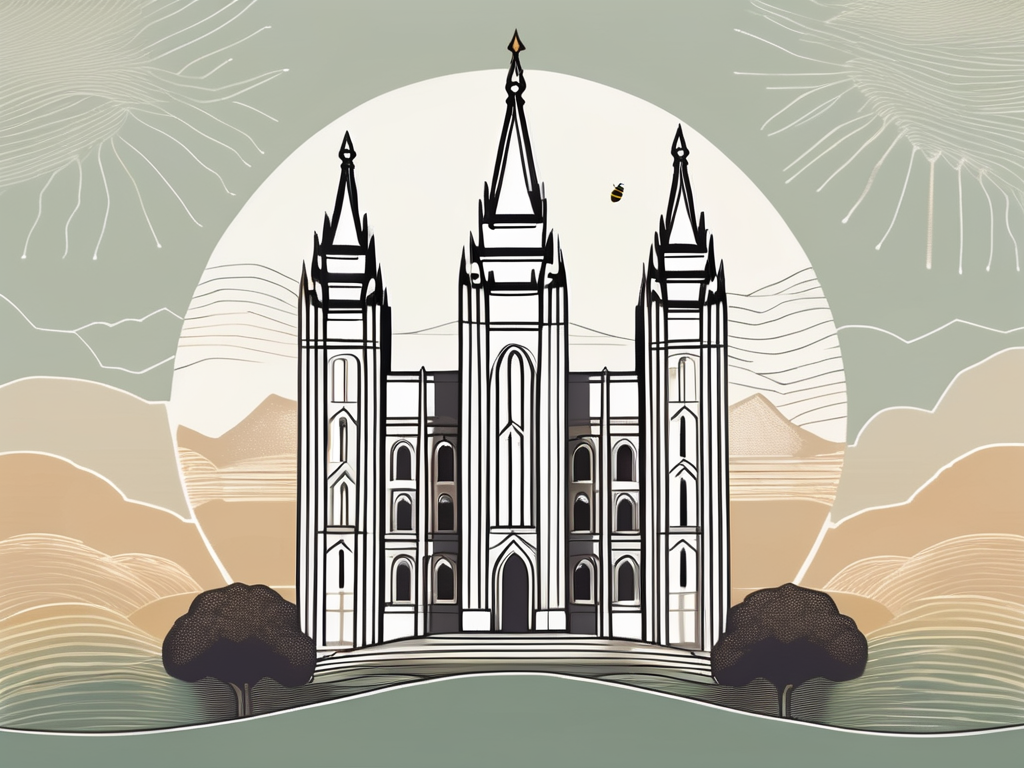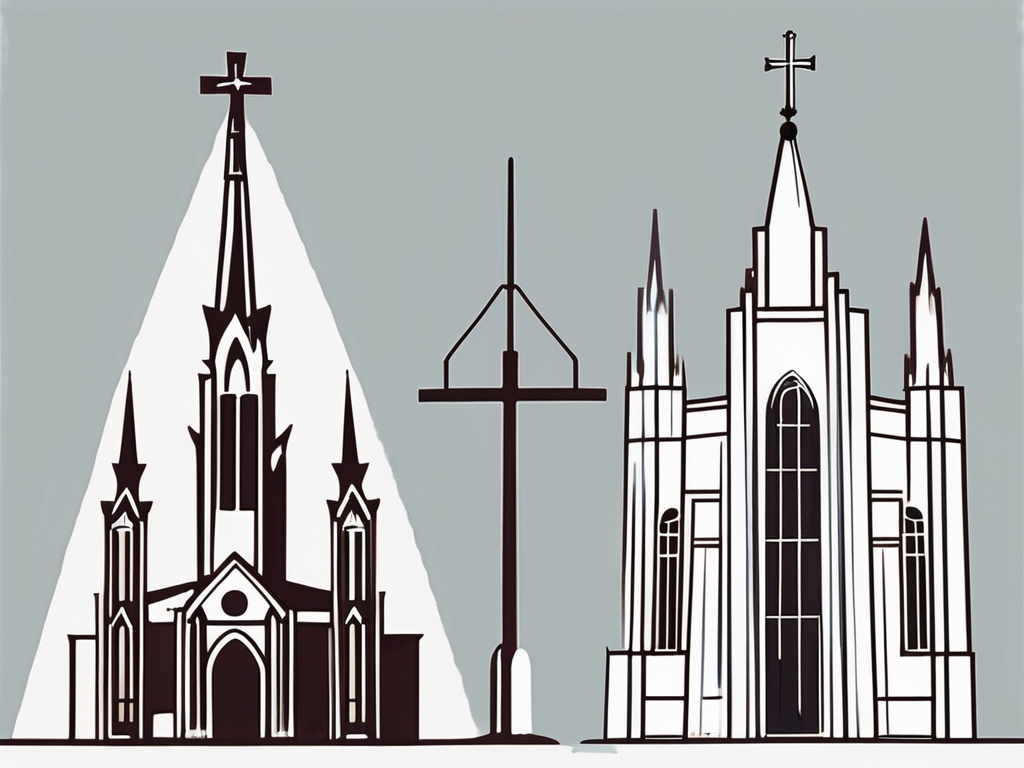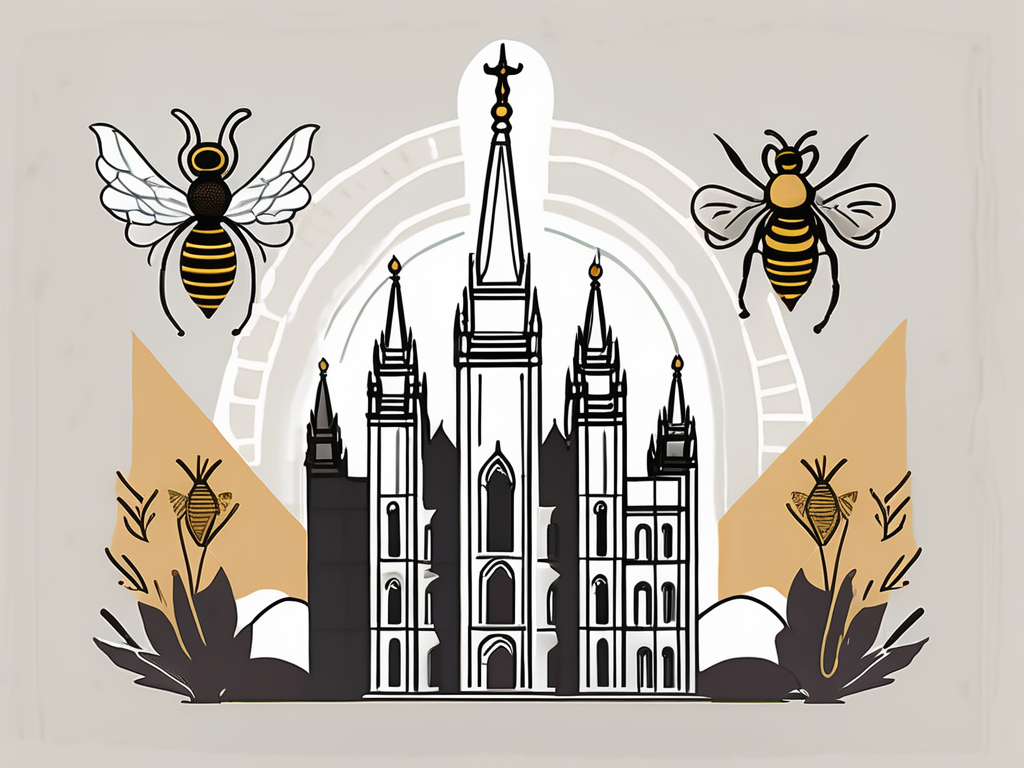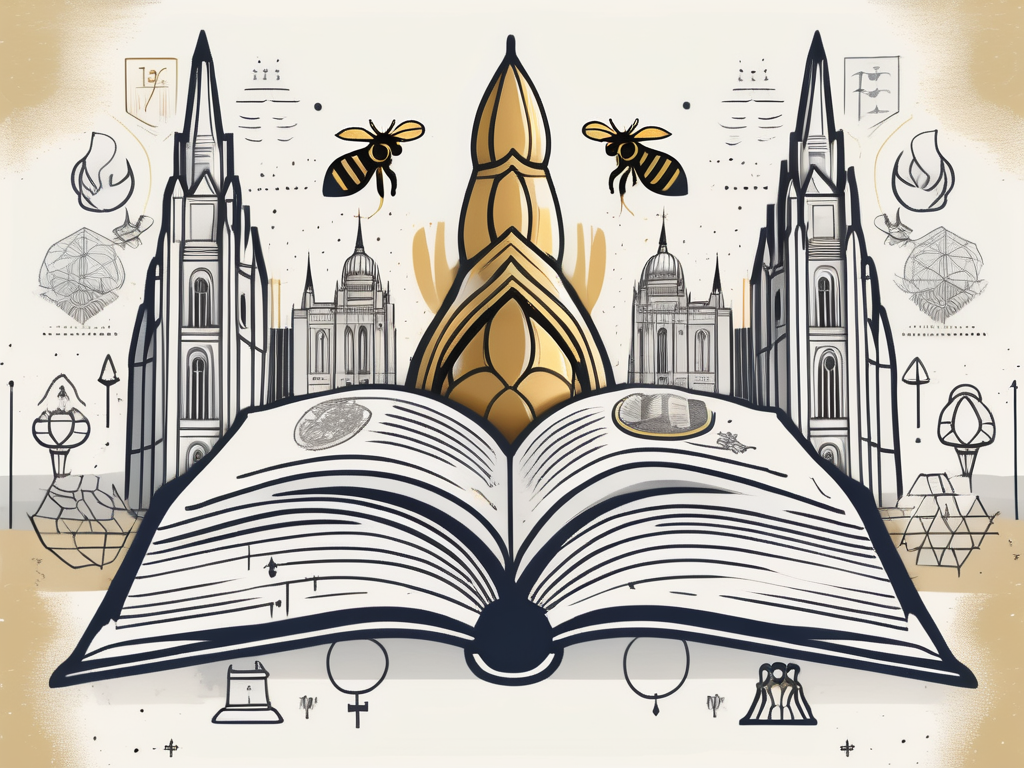Mormonism is a religious movement that encompasses various beliefs and practices. One crucial aspect of Mormonism is the concept of a Mormon Ward. Understanding what a Mormon Ward is and its significance can provide valuable insights into the Mormon community. In this article, we will explore the basics, structure, activities, community involvement, and global presence of Mormon Wards.
Understanding the Basics of a Mormon Ward
Before delving into the details, let’s start with a definition.
A Mormon Ward is a local congregation within The Church of Jesus Christ of Latter-day Saints (LDS Church). It consists of members who live in a specific geographic area, typically centered around a meetinghouse. Each Ward is led by a bishop who oversees the spiritual and temporal affairs of the congregation.
Now, let’s explore the fascinating world of Mormon Wards in more depth.
Definition of a Mormon Ward
A Mormon Ward is not just a physical location where Mormons gather for worship; it is a vibrant community that plays a significant role in the lives of its members. The term “Ward” itself comes from the idea of a protective boundary, symbolizing the unity and support found within the congregation.
Within a Mormon Ward, members find a place where they can connect with others who share their faith and values. It becomes a spiritual home, a place where they can grow closer to God and develop meaningful relationships with fellow believers.
The Importance of Wards in Mormonism
Wards hold immense importance in the religious and social lives of Mormons. They serve as a foundation for the organization of the LDS Church, providing a structure that allows for the efficient administration of spiritual and temporal matters.
One of the primary functions of a Ward is to facilitate worship. Members gather regularly on Sundays for sacrament meetings, where they partake of the sacrament, listen to sermons, and engage in communal prayer. These meetings provide an opportunity for individuals to strengthen their relationship with God and receive spiritual guidance.
Additionally, Wards offer a wide range of religious instruction and activities. Throughout the week, members can attend classes and workshops that delve into various aspects of Mormon doctrine and practice. These educational opportunities help individuals deepen their understanding of their faith and provide practical guidance for living a righteous life.
Furthermore, Wards foster a sense of community and belonging. They organize social events, service projects, and recreational activities that bring members together. These gatherings create opportunities for friendships to form, support networks to develop, and a sense of unity to flourish among the congregation.
Within the Ward, members also have access to a network of resources and support systems. The bishop, as the spiritual leader, is available to provide guidance, counsel, and assistance to individuals and families in times of need. The Ward community rallies around its members, offering emotional, practical, and spiritual support during challenging times.
In conclusion, Mormon Wards are not just physical spaces; they are vibrant communities that provide a sense of belonging, spiritual growth, and support for their members. Through worship, education, and fellowship, Wards play a crucial role in the lives of Mormons, helping them navigate their spiritual journey and build meaningful connections with their fellow believers.
The Structure of a Mormon Ward
Now that we have a grasp of the basics, let’s explore the structure of a Mormon Ward.
A Mormon Ward is a local congregation of The Church of Jesus Christ of Latter-day Saints. It serves as a place of worship, fellowship, and spiritual growth for its members. The structure of a Mormon Ward is designed to provide leadership, support, and opportunities for service to its members.
Leadership in a Mormon Ward
The bishop, as mentioned earlier, serves as the spiritual leader of the Ward. He is called by revelation and is sustained by the congregation. Assisted by two counselors, he guides and shepherds the congregation. The bishopric is responsible for the overall welfare of the Ward and its members.
In addition to the bishopric, a variety of other leadership positions exist within the Ward. These positions include teachers, clerks, and auxiliary leaders. Each leader has a specific role and responsibility in the Ward. They work together to ensure the smooth functioning of the Ward and provide guidance to its members.
The teachers in the Ward are responsible for teaching various classes and lessons. They help members gain a deeper understanding of the scriptures, doctrine, and principles of the gospel. The clerks assist with administrative tasks, such as record-keeping and financial management. They play a crucial role in maintaining accurate records and ensuring the Ward’s resources are used wisely.
Different Roles and Responsibilities
Within the Ward, members are assigned various roles and responsibilities based on their age, gender, and expertise. These assignments are made by the bishopric and are intended to help individuals grow spiritually and serve one another.
For example, men may serve as priesthood holders in the Ward. The priesthood is the authority to act in God’s name and is divided into different levels, including the Aaronic Priesthood and the Melchizedek Priesthood. Men who hold the priesthood have the responsibility to provide spiritual and administrative support to the Ward and its members. They may serve as leaders, teachers, or in other capacities as needed.
Women in the Ward also have important roles and responsibilities. They contribute through their involvement in the Relief Society, the women’s organization of the Church. The Relief Society provides support, education, and service opportunities for women. Women may also serve in the Young Women’s organization, which focuses on the spiritual and personal development of young women, or in the Primary, the children’s organization.
These different roles and responsibilities allow individuals to develop their talents, serve one another, and contribute to the well-being of the Ward. They create a sense of unity and purpose within the congregation, as everyone works together to build a strong and vibrant community of faith.
The Activities and Meetings in a Mormon Ward
A Mormon Ward is not just about Sunday worship services. Let’s take a closer look at the activities and meetings that take place.
Aside from the regular worship services, Mormon Wards offer a wide array of additional meetings and activities that provide opportunities for fellowship, personal development, and service. These events play a crucial role in strengthening the bonds of the community and fostering a sense of unity among the members.
Regular Worship Services
Ward members gather on Sundays for weekly worship services, consisting of sacrament meeting, Sunday School, and priesthood/relief society meetings. Sacrament meeting is a time for communal worship, where members partake of the sacrament (a symbolic remembrance of Christ’s sacrifice) and listen to talks and sermons. It is during this sacred time that individuals have the chance to reflect on their own spiritual journey and renew their commitment to living the principles of their faith.
Sunday School provides opportunities for spiritual learning and discussion. Members of all ages come together to study the scriptures, learn from the teachings of modern-day prophets, and engage in meaningful conversations about the principles of the gospel. This educational setting allows individuals to deepen their understanding of their faith and gain insights from the perspectives of others.
The priesthood and relief society meetings are gender-specific gatherings where men and women learn, discuss, and uplift one another. In these meetings, men and women have the opportunity to focus on their specific roles and responsibilities within the Church. The priesthood meeting provides a platform for men to receive guidance and instruction on how to fulfill their duties as fathers, husbands, and leaders in their homes and communities. On the other hand, the relief society meeting offers women a supportive environment where they can learn from one another, receive guidance on nurturing their families, and find strength in their unique roles as daughters of God.
Additional Meetings and Activities
Wards organize a range of meetings and activities to foster fellowship, personal development, and service. These events are designed to cater to the diverse needs and interests of the members, ensuring that everyone feels included and valued within the community.
One of the highlights of the Mormon Ward’s calendar is the youth activities. These gatherings provide young members with opportunities for social interaction, personal growth, and spiritual development. From camping trips and sports tournaments to talent shows and service projects, the youth activities aim to create a supportive environment where teenagers can build lasting friendships, strengthen their testimonies, and learn important life skills.
Another significant aspect of Mormon Ward life is the family home evening. This weekly event brings families together in their homes to participate in various activities that promote unity, love, and open communication. Families engage in scripture study, prayer, and discussions on gospel topics, creating a nurturing environment where parents can teach their children important values and principles.
Service projects also play a vital role in the life of a Mormon Ward. Whether it’s organizing a food drive for the local community, participating in disaster relief efforts, or providing assistance to those in need, members actively seek opportunities to serve and uplift those around them. These acts of service not only benefit the recipients but also strengthen the bonds of the community as individuals come together to make a positive difference in the world.
Lastly, social gatherings are a common occurrence in Mormon Wards. From potluck dinners and game nights to talent shows and holiday parties, these events provide members with a chance to relax, have fun, and build relationships outside of the formal worship setting. These social interactions foster a sense of belonging and create lasting memories that further strengthen the unity of the community.
Through the various meetings and activities offered in a Mormon Ward, members are able to build relationships, strengthen their faith, and support one another in their day-to-day lives. The sense of community and belonging that is fostered within these gatherings is a fundamental aspect of the Mormon faith, creating an environment where individuals can thrive spiritually, emotionally, and socially.
The Role of a Mormon Ward in the Community
Mormon Wards extend their influence beyond their congregational boundaries. Let’s explore their impact in the community.
When it comes to community service and outreach, Mormon Wards are known for their active engagement. They understand the importance of giving back and partner with local organizations to address societal needs. Whether it’s participating in disaster relief efforts or organizing food drives, Wards strive to make a positive impact. Their dedication to service serves as an example of Christlike love and compassion, inspiring others to join in the effort.
But the role of a Mormon Ward doesn’t stop at community service. They also play a significant role in organizing social and cultural functions that foster camaraderie and promote family values. These events go beyond the walls of the church and involve the entire community. From performances and talent shows to potlucks and community celebrations, these functions contribute to the social cohesion and well-being of both Ward members and their neighbors.
Through these social and cultural events, Mormon Wards create opportunities for people to come together, build relationships, and strengthen the sense of community. They provide a platform for individuals to showcase their talents and skills, fostering an environment of support and encouragement. These events also serve as a reminder of the importance of family values, promoting unity and a sense of belonging.
Furthermore, the impact of Mormon Wards in the community goes beyond the immediate benefits of service and social events. They also provide a support system for individuals and families in times of need. Whether it’s offering emotional support, financial assistance, or practical help, Wards are there to lend a helping hand. This support network creates a sense of security and belonging, ensuring that no one feels alone or unsupported.
In conclusion, Mormon Wards play a vital role in the community by actively engaging in community service and outreach, organizing social and cultural functions, and providing a support system for individuals and families. Their impact extends beyond their congregational boundaries, making a positive difference in the lives of both Ward members and their neighbors.
The Global Presence of Mormon Wards
Mormon Wards are not confined to one specific region. They have a significant global presence across diverse cultures and societies.
Mormon Wards Around the World
Whether in bustling cities or remote villages, Mormon Wards can be found in countries across the globe. Each Ward adapts to local customs and traditions while maintaining the core principles of Mormonism. This global presence reinforces the universal nature of the faith and fosters cultural understanding and appreciation.
Adapting to Different Cultures and Societies
Mormon Wards embrace diversity and tailor their programs and activities to suit the unique needs of the communities they serve. They respect local traditions, language, and customs, promoting inclusivity and harmony among their members, irrespective of their background.
In conclusion, a Mormon Ward is more than just a place of worship. It provides a supportive community, fosters personal growth, and contributes to the well-being of its members and the wider society. Understanding the basics, structure, activities, community involvement, and global presence of Mormon Wards allows us to appreciate the depth and significance of these congregations within the fabric of Mormonism and beyond.
